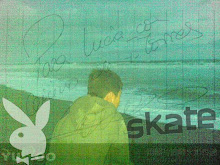Knowing the vehicle
Knowing the shape and size of the
vehicle and all its nuances is a critical part of the design process;
therefore, taking measurements before you do any design work is a must.
You really have to have a good handle on templates, templates are so key
because positioning is critical. If you have to do a lot of reprints,
then that could break your business. Experts also recommend an auto
library that contains vector images of cars, trucks and buses and a
digital camera with which to take pictures. The goal is to know every
inch of the vehicle. If you don't take time to do this up front, then
you could end up with text over a door handle. Even though you are
wrapping a 2003 Dodge Caravan, for example, measurements are still
important because there are slight differences that could cause major
problems during installation. You can get this library at the end of
this article.
Designing for wraps
Designing for
wraps is completely different than other types of design work, It's like
any new media, you have to learn the media and you have to learn what
is going to capture the attention of the people. It's more than just
putting graphics on a car. Avoid using too much text or colours. Many
people are using rainbows on cars and that causes the intended viewer to
miss the message. In fact, making a bold statement is one of the
biggest challenges in designing for wraps. You have to keep it simple.
You need a strong message. You only have a few seconds to get the
message across as the car passes by, It's a branding media; it's not a
message media. You just show the brand for recognition more than to run a
brochure.
Keeping it simple
One of the biggest
mistakes with wrap designs is going overboard with flashy graphics or
trying to put a one-dimensional design on a three-dimensional vehicle.
Normally where your hood and your front bumper transition to the side of
the car is challenging. You are basically laying down a flat design on
the hood and a flat design on the side of the vehicles and if you have a
wacky design, then they don't transition well on either side of the
hood and on either side of the trunk on the back. One key to success
boils down to common sense: work closely with the client throughout the
design process. In fact, you could even outsource the design work, the
printing and the installation and basically act as a sales rep. If the
customer wants to deal with you and the price is fine, then go for it.
Preparing the vehicle for installation
Once
the design work is complete, the next step is preparing the vehicle for
installation. Proper cleaning and preparation of the substrate prior to
application is critical to the success of the wrap, because if the
vehicle is not thoroughly cleaned immediately prior to application, then
the result could be adhesion loss. You want to make sure to get all the
dirt out of any contours and grooves, any dirt can effect how any of
the film adheres to the substrate. Most vinyl manufacturers recommend
cleaning the vehicle with a commercial detergent and water. If grease,
oil, wax or any other grime is present, then the substrate must be
scrubbed with a solvent and wiped with a soft, lint-free cloth before it
dries. Isophoryl alcohol is strong enough to clean away any left over
impurities that could hinder the adhesive, but not so strong that it
will damage the paint. Still, experts recommend testing the cleaning
solvent on an inconspicuous area of the application surface first to
check for potential damage.
Allowing the vehicle to dry
Experts say a common mistake
during the preparation process is not allowing the vehicle to dry fully.
It can take up to 24 hours for a vehicle to dry completely, especially
in humid or cold atmospheres. Emphasize on the importance of surface
preparation, one common mistake that is easy to understand but often
overlooked is having the vehicle at the proper temperature for
installation. Sign shops in the north are at somewhat of a disadvantage
because vinyl films are typically more susceptible to failure in cold
environments. Even if the vehicle seems like it's dry, if it's cold and
there's moisture in the air, then it sticks to the surface of the
vehicle and creates barriers to the performance of the film.
Considering paint and glass
If
you are applying film to a newly painted surface, Avery recommends
following all drying and curing instructions provided by the paint
manufacturer prior to surface preparation and film application. Avery
also recommends the use of high quality exterior grade paints and OEM
systems. You also need to prepare the glass if you are going to apply
perforated vinyl to these areas. Like the vehicle itself, the glass
should be perfectly clean. Avery recommends removing any stickers, paint
or over-spray using a single razor blade scraper. Then spray the glass
with cleaning solution, squeegee it dry using a soft rubber window
squeegee and wipe the edges using lint-free paper towels.
Once the vehicle is thoroughly cleaned and dried, then you can proceed with installing the wrap.









0 komentar:
Posting Komentar
Apakah blog ini membantu anda ?